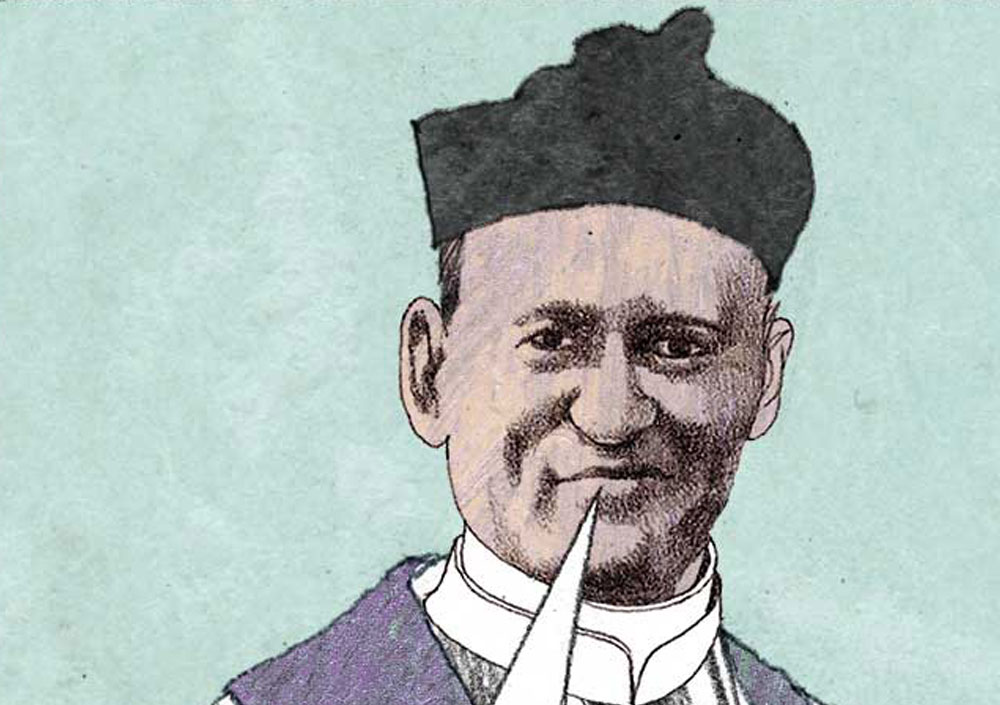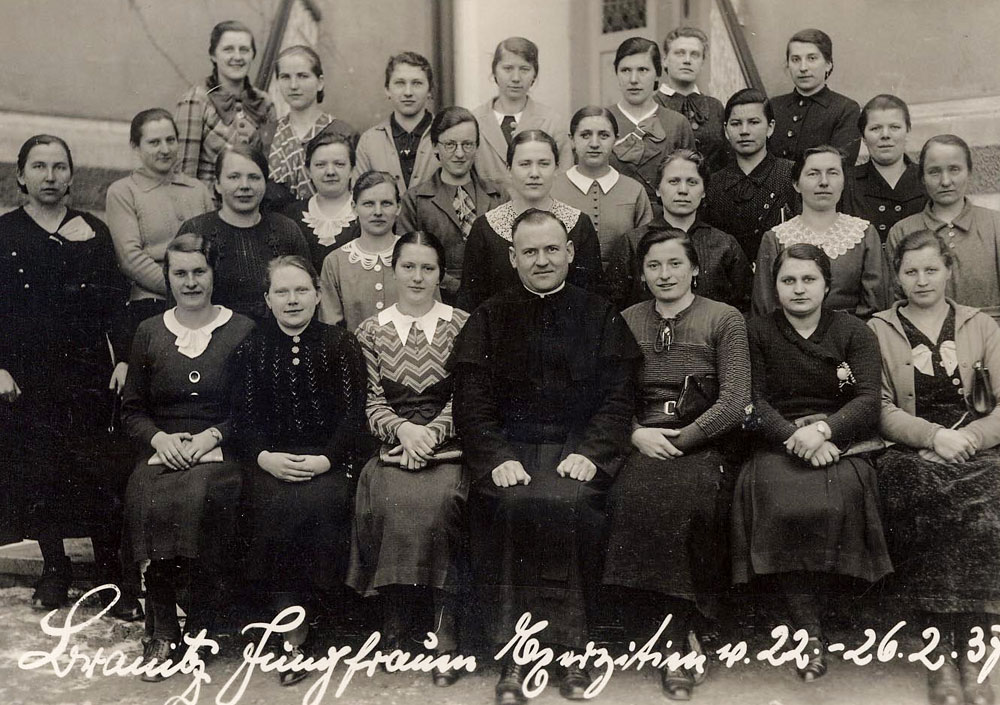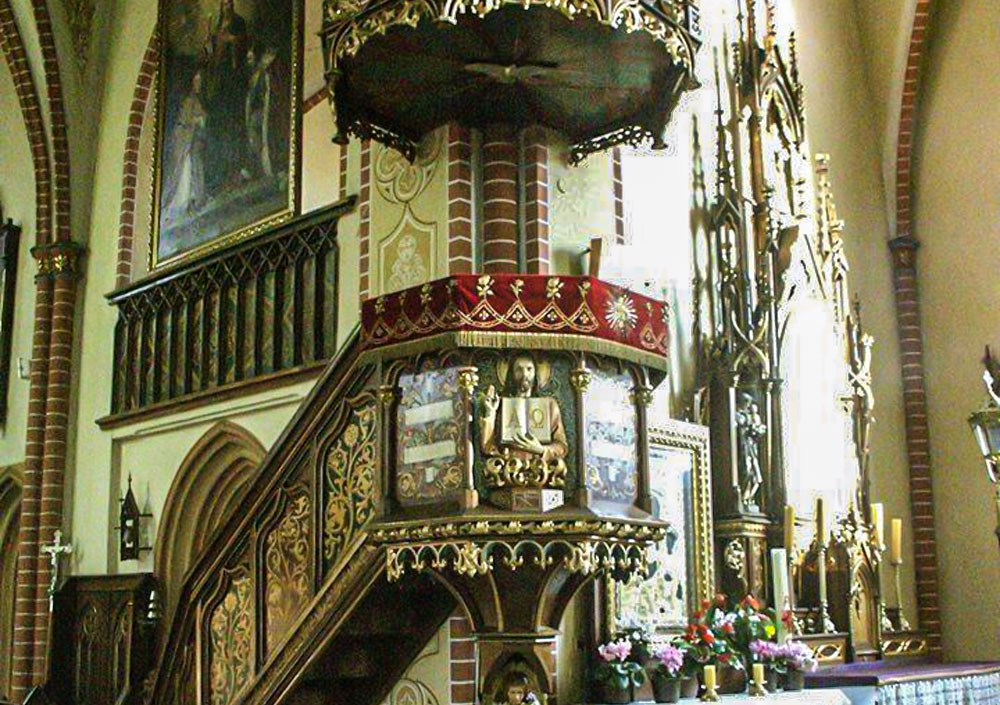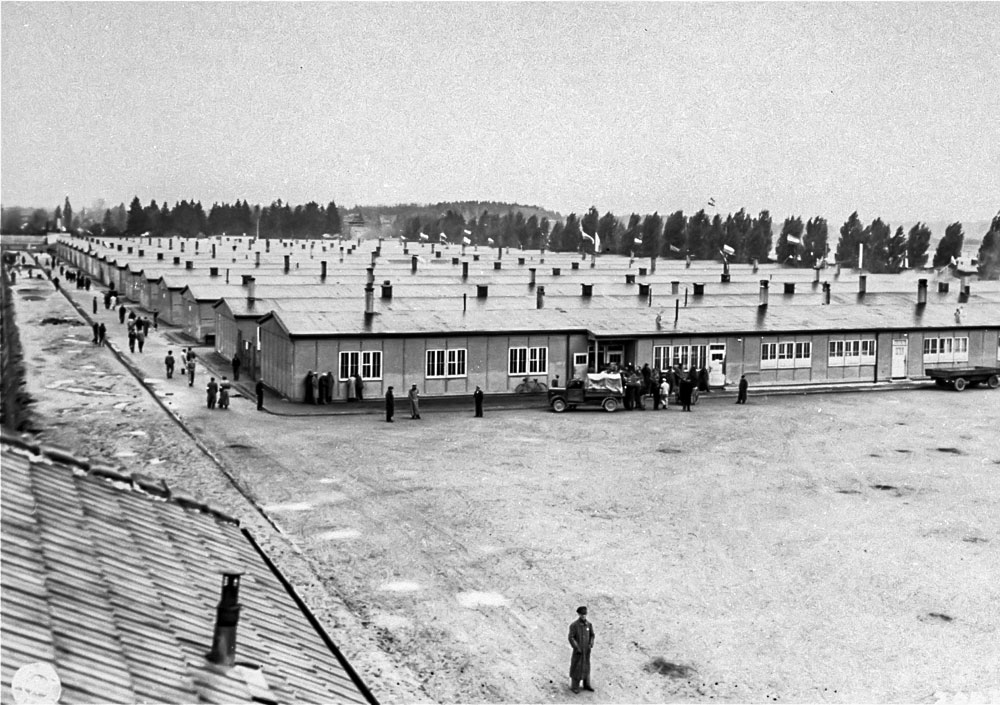Richard Henkes was born in Ruppach on 26 May 1900. Ruppach is the village in the Westerwald, which today is called Ruppach-Goldhausen together with the neighbouring village, and counted a good 320 Catholics around 1900.
read moreSo in 1912 Richard joined the Pallottine Fathers as a student in the newly built Schoenstatt Study Home. He was part of the first class to move into the new study home. Richard's life took place here for the next seven years.
read moreThe July crisis triggered by the Sarajevo assassination of the heir to the throne, Archduke Franz Ferdinand, was followed by the Austro-Hungarian declaration of war on Serbia, which marked the beginning of the First World War. On 2 February 1916 Richard became a member of the Congragatio major and decided to join the missionary section.
read moreRichard was elected Assistant of the Mission Section on 16 June 1917 and was thus also given responsibility for the members who had already been drafted into the military.
read moreOn 23 March 1918, Richard had to go to Koblenz for muster and was written "fit for military service in the infantry". In Montabaur, on 21/22 May 1918, he passed the state one-year exam, which is the prerequisite for an officer's career.
read moreIn July, Richard passed his written and oral baccalaureate examinations and received his school-leaving certificate. A little later he began the two-year novitiate in Limburg with the retreat from 17 to 24 September 1919 and the initiation on 24 September together with 22 priest candidates and 10 brother candidates.
read moreThe second academic year began on 1 October 1921. In addition to the scientific training, the religious training also continued. Richard took his second ordination on 24 September 1922, and his third ordination a year later.
read moreRichard completed his studies in Limburg and began as a teacher in Schoenstatt.
read moreHealth problems made themselves felt in Henkes in May 1927. While this was initially attributed to overexertion, an examination at the St. Maria-Josef Hospital in Ahrweiler revealed that he was suffering from severe pulmonary tuberculosis.
read moreIn addition to his teaching activities in Alpen, Richard also became 2nd house councilor. He carried out his duties with great zeal and drive. However, disagreements arose between Henkes and the rector.
read moreBack in Schoenstatt, Henkes now taught German and geography. His pupils were happy about the return of the teacher who showed much pedagogical skill and met the pupils openly and with humour.
read moreIn 1931, the political situation in the German Reich continued to be unstable, the world economic crisis became increasingly severe and unemployment rose rapidly. It was during this time that Henkes arrived in Katscher, Upper Silesia.
read moreIn 1937, Richard Henkes was transferred to Frankenstein in Silesia. However, after the trial of Father Henkes, the superiors of his communities considered it advisable to remove him from the school in 1938 and he gave up his beloved teaching profession.
read moreOn 26 June 1940, the Pallottine Fathers had to vacate the school in Frankenstein on Nazi orders. Shortly afterwards, on 19 July 1940, Henkes was mustered as fit for military service during his health examination.
read moreThe Gestapo had had its sights on the "people's agitator" and "rabble-rouser" for some time. After his sermon on 12 March 1943 in the Branitz parish church, Richard Henkes was denounced.
read moreOn 10 July 1943, Richard Henkes arrived at the Dachau concentration camp. It was one of the first concentration camps built by the Nazis with a crematorium with four incinerators.
read moreLike all prisoners, the priests had to belong to one of the various work commands after 1942. Henkes was assigned to the "Plantation" labour command when he was sent to Priest Block 26.
read moreRichard Henkes started his new job in August 1944 and was located in Access Block 17, which he went to in the morning and left again in the evening. As kapo and clerk, Richard was a kind of administrator for the men of barrack 17.
read moreTowards the end of the war, a typhus epidemic broke out in Dachau concentration camp before Christmas 1944. This is an infectious disease transmitted by clothes lice.
read moreAn appropriate detachment brought the body of Father Richard Henkes to the death chamber, where it was dissected the same day. Father Richard Schneider succeeded in convincing the Kapo of the crematorium to burn the body of Richard Henkes one by one.
read moreThe Provincial Assembly of the Limburg Pallottine Province decides in January 2001 to initiate a process of beatification.
On 24 May 2003, the Bishop of Limburg, in whose diocese the birthplace of Father Richard Henkes is located, opens the diocesan investigation procedure for beatification.
The sealed files on Father Richard Henkes are handed over to the Congregation for the Causes of Saints in the Vatican, where they are officially accepted.
In front of the house where Richard Henkes was born at Hauptstraße 10 in Ruppach-Goldhausen and in the Czech partner parish of Strahovice, stumbling stones commemorate the Pallottine priest and the injustice committed against him by the Nazis.
read moreOn 22 December, Pope Francis officially recognised Father Henkes' dying as a "martyrdom".






























